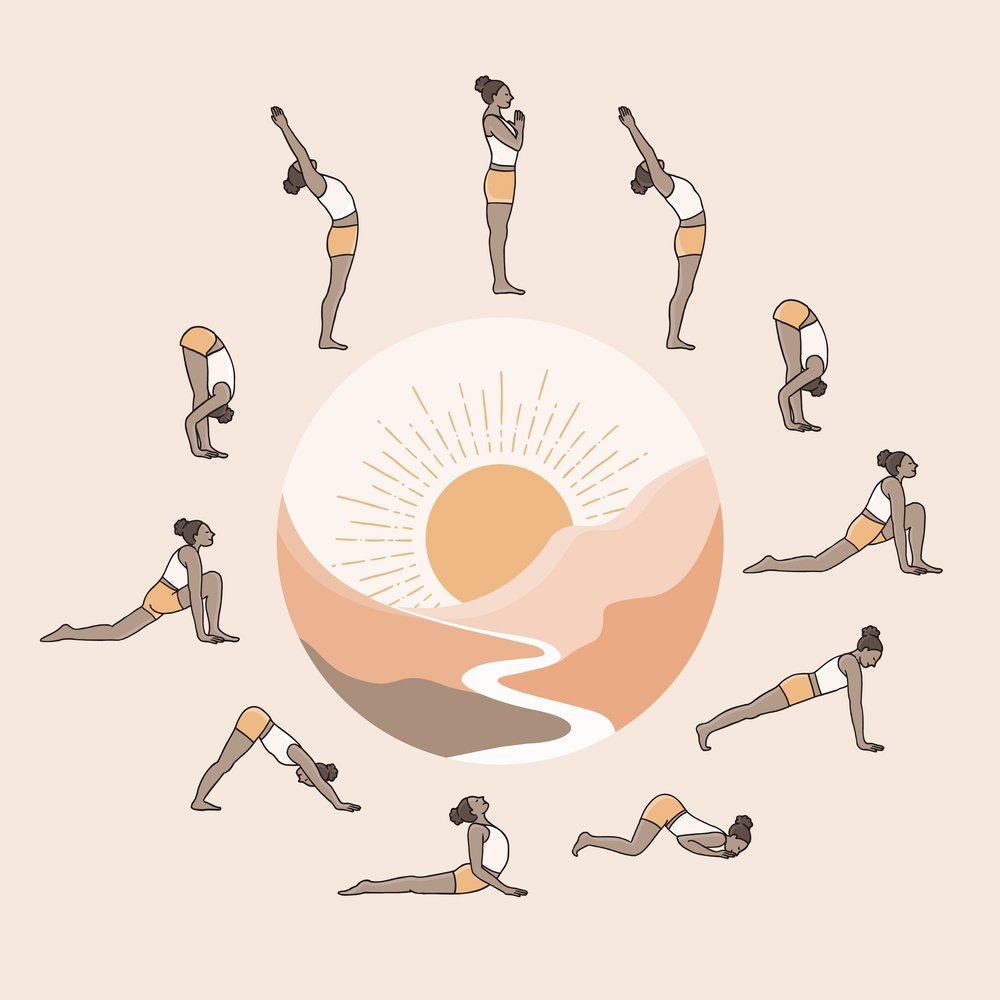Ashtanga Yoga: The Way of Strength & Serenity
The relentless pace of life-in dealing with virtually every one we acquaint-encircles the search for balance; increasingly, individuals identify practices that will elevate both their physical and mental states to well-being. Ashtanga Yoga presents a profound discipline in which strength and peacefulness are harmoniously combined to provide an enhanced feeling of wellness.
The Beginnings & Evolution of Ashtanga Yoga
Pattabhi Jois (who made it more popularized and codified it in the 1900s) is the spark behind today’s Ashtanga Yoga Research Institute in 1948. Jois claimed—although some debate this—that he acquired this dynamic method from his mentor, Tirumalai Krishnamacharya. The origin of the figure, as Jois claimed, is from an ancient manuscript called “Yoga Kurunta,” supposedly written by the sage Vamama Rishi. However, doubt about its existence is naturally extant with scholars (as mostly considered lost to history).
Ashtanga is derived from Sanskrit that is translated into the “eight limbs,” and is only synonymous with those eight elements that this eightfold path expounded by Sage Patanjali, as recorded in the Yoga Sutras, says that it is composed of. These eight limbs are Yama (moralities and disciplines), Niyama (observances and ethics), Asana (body disciplines), Pranayama (breath control), Pratyahara (sense withdrawal), Dharana (concentration), Dhyana (meditation), and Samadhi (samadhi). In Ashtanga Yoga, the primary focus is upon the physical postures (asanas) employed along with the breathing (pranayama). It is a holistic approach addressing not simply physical fitness, but also stimulation towards an increased awareness towards the mind-body connection. Although Ashtanga Yoga has great emphasis on suffering and struggles, the basic elements serve only as a physical foundation for spiritual awareness of higher consciousness. Thus, practitioners typically experience a journey of transformation that ends up being past what is truly physical.
The Structure of Ashtanga Yoga
Ashtanga Yoga has a reputation for its organized sequences. Each sequence builds on the one before it making sure practitioners progress step by step. The practice has six series:
Primary Series (Yoga Chikitsa or Yoga Therapy): This basic series aims to cleanse and line up the body. It puts emphasis on forward bends and key poses to make you stronger more flexible, and boost your endurance.
Intermediate Series (Nadi Shodhana or Nerve Cleansing): This sequence takes things up a notch from the primary series. It goes deeper into backbends and hip openers, to purify the nervous system and balance energy pathways.
Advanced Series (Sthira Bhaga or Divine Stability): This series is split into four parts (A, B, C D) for expert practitioners. These sequences include tough poses, like arm balances and deep twists, which need a lot of strength, flexibility, and focus.
Practitioners work through each series one after another. They get the hang of the poses and ideas in one series before moving on to the next. This step-by-step method helps to make sure both body and mind grow stronger in a safe and lasting way.
Core Principles: Tristhana and Vinyasa
Tristhana and Vinyasa are the most central principles within Ashtanga Yoga, focusing on a practice that is simultaneously meditative and transformative.
Tristan: The term used for “the three places of attention” represents:
Asana: The positions or postures of the physical body, cleaning and aligning the body and preparing it.
Pranayama: Controls breathing, enhancing inner warmth, and inducing purification.
Drishti: Gaze Point or focus given to the point during the different asanas to stabilize and concentrate your mind.
By combining all three, the practitioner develops an intense and in-turned practice, cultivating both bodily steadiness and mental calmness.
Vinyasa: Often translated as “breath-synchronized movement,” Vinyasa in Ashtanga refers to the fluid transitions between postures, coordinated with specific breathing patterns. Each movement is linked with either an inhalation or exhalation, creating a dynamic flow that generates internal heat, purifies the body, and cultivates a moving meditation.
The Journey to Strength
Ashtanga Yoga is known for its physically demanding sequences, which, when done regularly, bring in considerable strength and endurance.
Muscular Development: The asanas include a mix of different postures that work and make multiple muscle groups strong. For example, arm balances and inversions strengthen the upper body while standing asanas and lunges develop the power of the lower parts of the body.
Core Strength: Most of the Ashtanga postures demand and strengthen core muscles. In addition to maintaining bandhas, especially the Uddiyana Bandha, or abdominal lock, which contracts the deep core muscles and thereby enhances stability and balance.
Cardiovascular Endurance: The continuous sequence of postures combined with regulated breathing challenges cardiovascular endurance. As time goes by, the practitioners develop stamina and resilience.
These benefits are supported by anecdotal evidence. Thus, a person, starting Ashtanga in their 60s, made incredible improvements in flexibility, balance, and strength. According to them, such results were the result of this strict and consistent method of practice.
Cultivating Serenity Through Practice
More than the physical benefits, Ashtanga Yoga gives one immense mental and emotional relief and takes them toward peace and clarity within.
Stress Reduction: Coordinated breath with movement, coupled with a sharp focus, engages the parasympathetic nervous system and decreases stress while creating a relaxing state of being.
Improved Concentration: Using Drishti in the practice, focusing the eyes in different postures trains the mind to focus, increasing concentration and mental control.
Emotional Balance: A regular practice creates an enhanced level of self-awareness that allows the person to better observe and control their emotional responses.
A practitioner who was initially skeptical of yoga found that consistent practice led
Conclusion
Ashtanga Yoga offers a holistic approach to physical vigor and mental serenity. This ancient practice provides a structured pathway for practitioners to develop strength, flexibility, and inner peace, all based on ancient wisdom. It is an excellent way for individuals to take a transformative journey toward holistic well-being.
